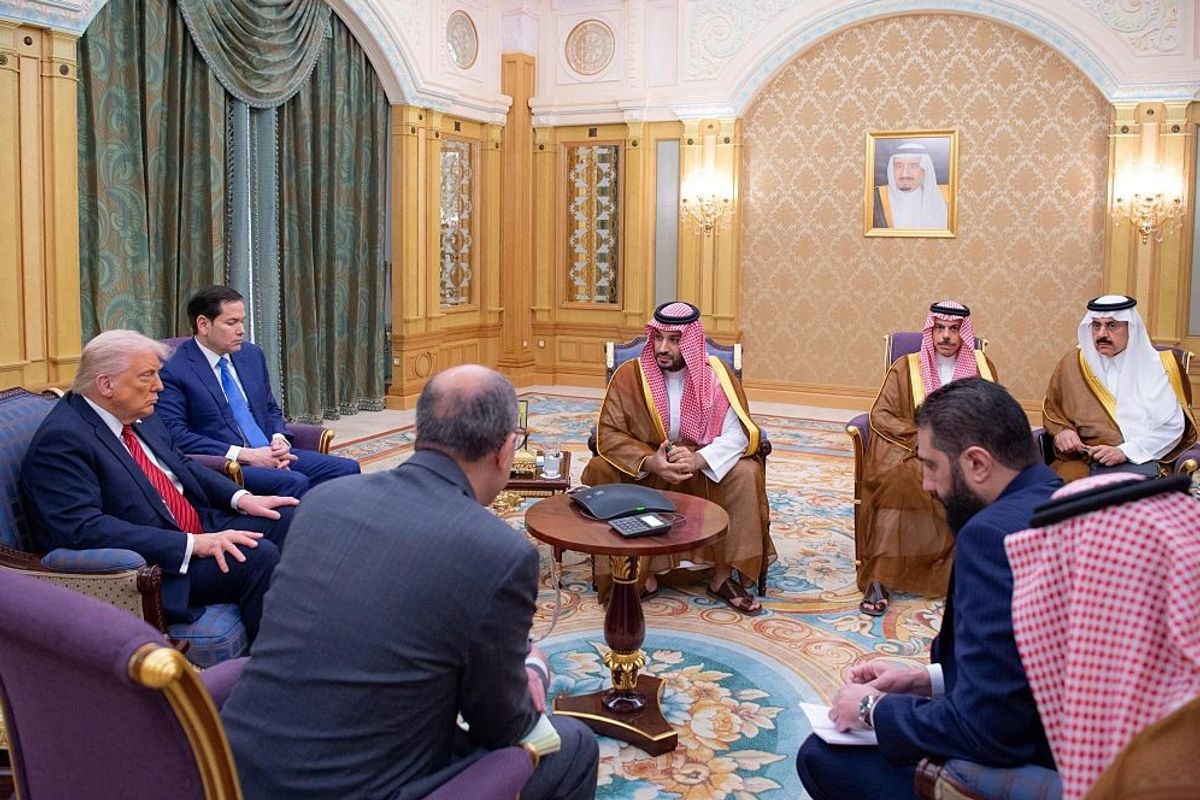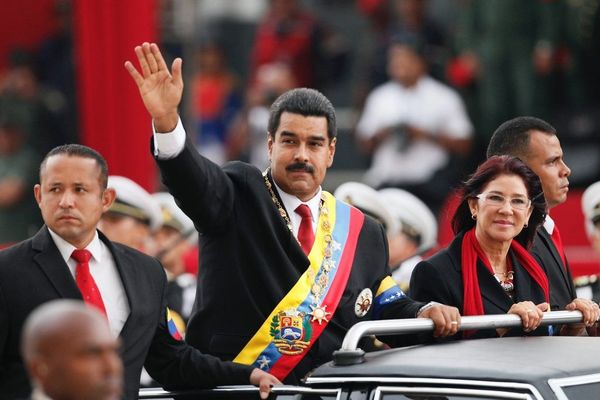The territorial battle against ISIS is nearing its final stages in Iraq and Syria. Iraqi Prime Minister Haider al-Abadi has already declared that the ISIS caliphate has fallen and, in Syria, U.S.-backed Syrian Democratic Forces are pushing deep into the ISIS "capital" of Raqqa. However, as victory looms, new and perhaps more dangerous battles await. The Cipher Brief’s Fritz Lodge spoke with Aaron Stein, a fellow at the Atlantic Council’s Rafik Hariri Center, about competing claims to the Iraqi-Syrian border – especially in northern Iraq – and what new conflicts could follow ISIS’ fall.
The Cipher Brief: What is the current status of forces in northeastern Syria and northwestern Iraq? Who are the major military players and how well are they positioned to compete, particularly in the area surrounding Sinjar in northern Iraq?
Aaron Stein: In the northeast of Syria, it’s obviously the United States that is the most consequential actor. Their preferred – really, their only – partner is the Syrian Democratic Forces, the SDF. The SDF only functions because of the logistics that the Kurdish-majority YPG [People’s Protection Units] provide. You cannot spin off the Arabs, however many there are. They are only able to fight in the way that they do because the YPG operates as a homogenous force.
The YPG and the SDF are not necessarily committed to regime change in Syria. Their actions to date suggest that they’re willing to look out for their own interests, which is essentially political autonomy for the YPG. So they are willing to find common cause with the regime, or at least find understandings. West of Manbij in north central Syria is a good example. Even in Qamishli [northeastern Syria], the regime still has a presence there. The regime’s backers are Russia and Iran, and Russia has used the YPG as a tool to advance its own interests in other parts of Syria, particularly when it was directly involved in a conflict with Turkish-backed rebels over control of Aleppo, which Russia and the Syrian regime won. Then you have the Iranian forces as well, whose linkages with the YPG and the Turkish PKK Kurdish militants are a little nebulous. Nevertheless, the broader coalition between Russia, the regime, and Iran has largely not fought the Kurds, and has tolerated their presence in certain areas.
TCB: As the Kurds and the SDF lead the attack on Raqqa to the south, to the north there are also reports of YPG units moving into the Sinjar area of Iraq, and of a preexisting PKK presence there. The Iranian-backed Iraqi Hashd al Shaabi, or Popular Mobilization Units, have also moved into that region. Can you sketch out the map of that area, the actors there and their relative strengths?
Stein: Sinjar is difficult because it’s disputed territory inside of Iraq. People are using the local ethnic minority, the Yazidis – who ISIS quite literally tried to exterminate – as a political football to extend influence in that region. Sinjar was under the control of the KDP [Kurdish Democratic Party, the ruling party of the Kurdistan Regional Government in Iraq] but the KDP failed to defend the Yazidis from ISIS in the opening days. The following battle around Sinjar against ISIS, in which PKK fighters and YPG fighters from Syria played a major role, was actually the initial genesis of U.S. cooperation with the YPG, leading into the battle for YPG-held Kobane, which was a major turning point against ISIS in Syria.
Sinjar became a divided city between the KDP and the PKK, and there was this internal conflict between the KDP and the PKK that delayed its liberation from ISIS. So now you’re left with this situation where you have the PKK – who have basically installed military advisors with Yazidi militia units – and Kurdish KDP Peshmerga who have deep ties to Turkey. Turkey trains KDP Peshmerga units, who then turn around and train local ethnic militias in Sinjar.
This dynamic pits a PKK proxy against an essentially Turkish-trained proxy along a narrow front line of the territory they’ve liberated from ISIS. That can be even more complicated by the introduction of Iraqi PMU into this area. The PMUs aren’t monolithic but the more pro-Iranian elements within the Hashd have largely rallied to the side of the PKK as a way to stick it to Turkey. So now you have the PMU militias enveloping Yazidi militias into the PMU structure so that they are now getting salaries from Baghdad, which has an interest in taking back this territory.
Long story short, you now have a multidimensional proxy conflict in this small town on the border. That town matters to the PKK because it is a way to break the Turkish-KDP blockade of Rojava [Kurdish-held northern Syria], and it’s on the road to Tal Afar, which will be under the control of the PMU, and if you can control that road you control the entry route from Syria into Mosul and you can project power into Mosul.
TCB: What about Iran? What is their interest in Sinjar?
Stein: It looks like this is part of a broader “race” into Deir al Zour [a region in eastern Syria], and the question of who will control the border areas in Iraq and Syria, really to go after ISIS but also to control these routes between the two countries.
Good luck to anybody who wants to control this part of Syria, it’s not very easy. But another Iranian goal here is to kick the U.S. and aligned forces out of these areas. Iran does not like the U.S., and they view this in zero-sum terms. Sticking it to the United States and preventing them from doing things is driving policy. Whether the Syrian regime and Iran-backed forces can do it is another question.
TCB: Does Iran see a way to present itself as a possible ally to the Kurds by establishing its presence along the border, especially if the U.S. follows through on its promise to abandon Syrian Kurds after the battle against ISIS is over?
Stein: Iran and the Kurds have a very complicated relationship. The Barzanis [the ruling political dynasty of the Kurdistan Regional Government (KRG)] spent their time in exile in Iran. [KRG Prime Minister] Nechirvan Barzani speaks Farsi, [KRG President] Massoud Barzani spent his exile in Iran. Even though the KDP is supposed to be closer to Turkey than they are to Iran – whereas the opposition Patriotic Union of Kurdistan party and its leader Jalal Talabani are supposed to be closer to Iran – nothing is neat. The PKK has an affiliate in Iran that attacks the Iranian Revolutionary Guards Corps every once in a while, but they often come to quasi-cease fires and Turkey accuses Iran of using the PKK as a tool of policy.
On the YPG, the regime has been very clear that they want to take back all of Syria, and Iran backs the regime, so they will have a choice to make. When the regime and Iran consolidate control south of the Euphrates river, with U.S.-backed forces north of the river, I think that probing attacks like we saw near the Tabqa dam earlier this month will become a daily occurrence. If they want to go all in and try to fight through as many as 50,000 SDF troops, we will see this war extend for years to come. That will be their choice.
TCB: How far do you think Russia is willing to go to protect the Syrian regime in these probing attacks?
Stein: Not very far. For Russia, I think places like Tabqa are not that important. Because the YPG is not wedded to regime change, they are not antithetical to Russian interests in basically smashing the rest of the opposition to ensure that it’s Bashar al Assad and nobody else.
Whether the regime shares that assessment remains to be answered. If not, how far will they ignore Russia to attack U.S.-backed forces?
What the U.S. will do in response also remains in question. I can tell you that the U.S. has no policy on this, they haven’t figured it out yet. We’re making it up as we go along.














